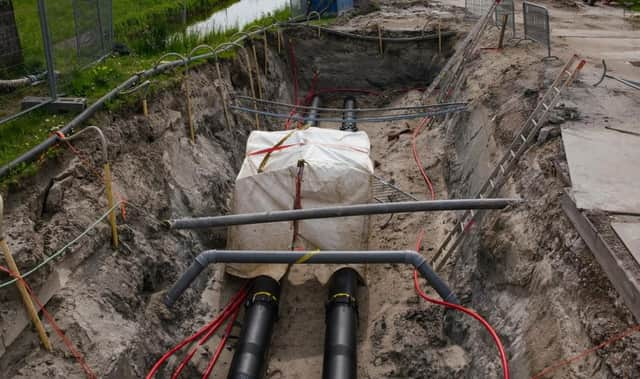Could local networks be the answer to our energy future?


Home heating comprises half of all energy use in Scotland, so sustainable energy in our homes is imperative to reducing emissions. Around 80 per cent of homes use gas as the primary source of heating - so we have a long way to go. But there is cause for optimism as we have a number of possibilities: switch to electricity, use hydrogen or local heating networks. Electricity and hydrogen both present challenges, however district heating networks may well be the answer.
Local heat networks are underground pipes carrying hot water to clusters of buildings. They provide a viable solution to cutting emissions from homes and buildings, because they can use any available heat sources, including excess supply of renewable electricity. For example, when the wind is high, but demand for electricity is low, power grid operators may have to pay wind turbine owners to shut down, with a cost to customers. Instead, a heat network operator could buy that power at a low price, use it to charge up a ‘thermal store’ (a hot water tank connected to the pipe network), and to supply affordable heating and hot water.
Advertisement
Hide AdAdvertisement
Hide AdHeat networks also lessen the impacts of demand surges by using the hot water already stored in pipes and tanks, alongside any other local ‘waste heat’ sources to provide heating, rather than relying on electricity when prices are high.
Adoption of these innovative district heating networks will not disrupt home comforts. The supply of heat and hot water is very similar to gas central heating, but the boiler is replaced by a hydraulic interface unit (HIU). Households pay for heat as a service rather buying and maintaining a boiler and buying gas. In Aberdeen, where district heating networks are already in place, residents typically see a 40 per cent reduction in their heating bills, and benefit from full central heating and hot water on demand.
To make this scientific possibility a more widely adopted reality in Scotland, the new Heat Networks (Scotland) Act was passed in March 2021, aiming to identify priority zones where new district heating systems could go in the ground. While the infrastructure of insulated pipes and pumps is costly in terms of capital investment, the costs are recovered over the long term by heat purchase agreements with local customers.
We’re committed to reaching net zero in Scotland – and part of the solution may well lie below our doorstep.
Janette Webb MBE is Professor of Sociology at the University of Edinburgh and co-editor of The Research Handbook on Energy and Society. Rebecca Jane Lunn MBE is a fellow of the Royal Society of Edinburgh (RSE), Professor and Head of the Centre for Ground Engineering and Energy Geosciences at the University of Strathclyde. The RSE is Scotland's national academy, bringing great minds together to contribute to the social, cultural and economic well-being of Scotland. Find out more at rse.org.uk and @RoyalSocEd.
Comments
Want to join the conversation? Please or to comment on this article.